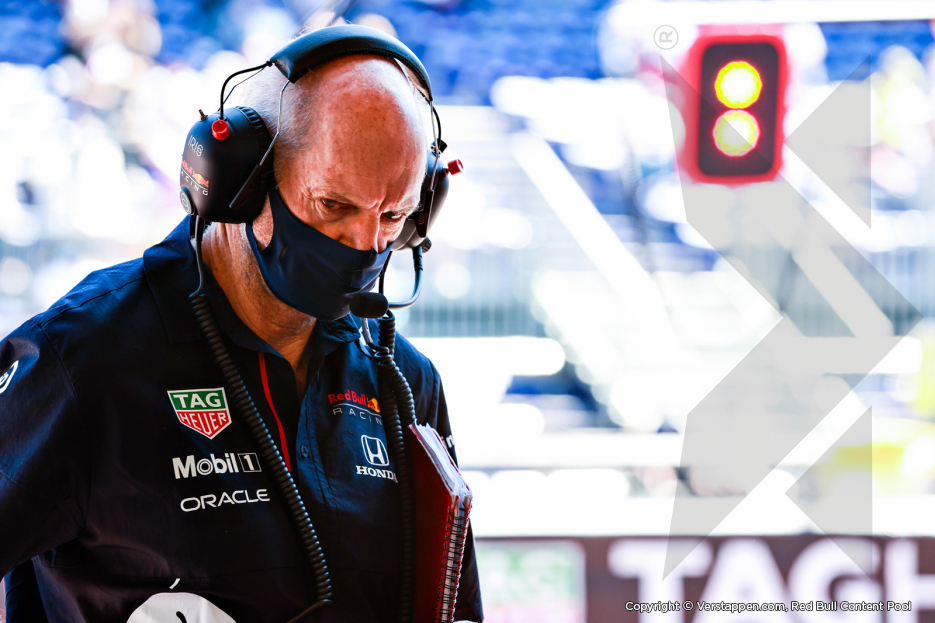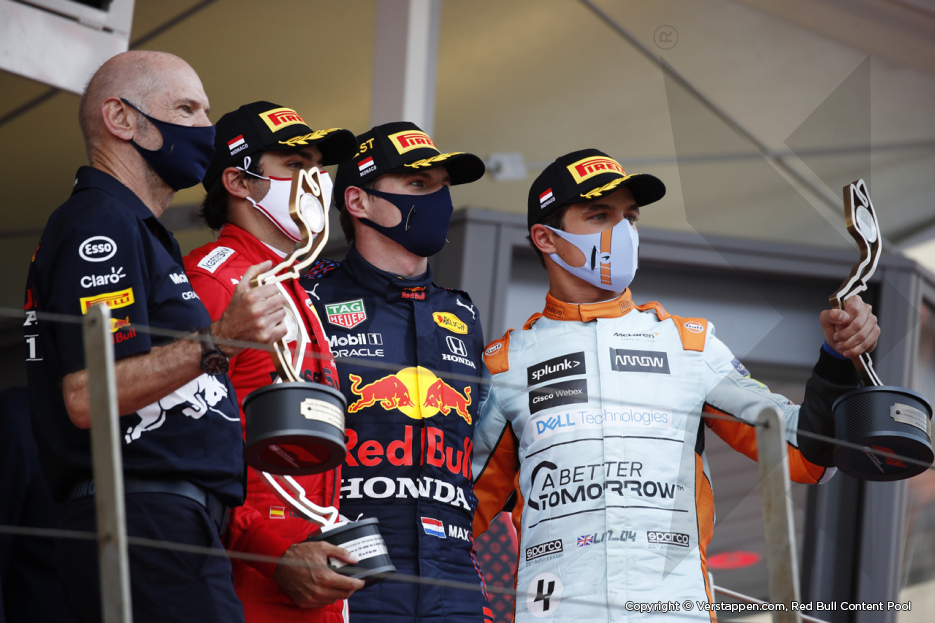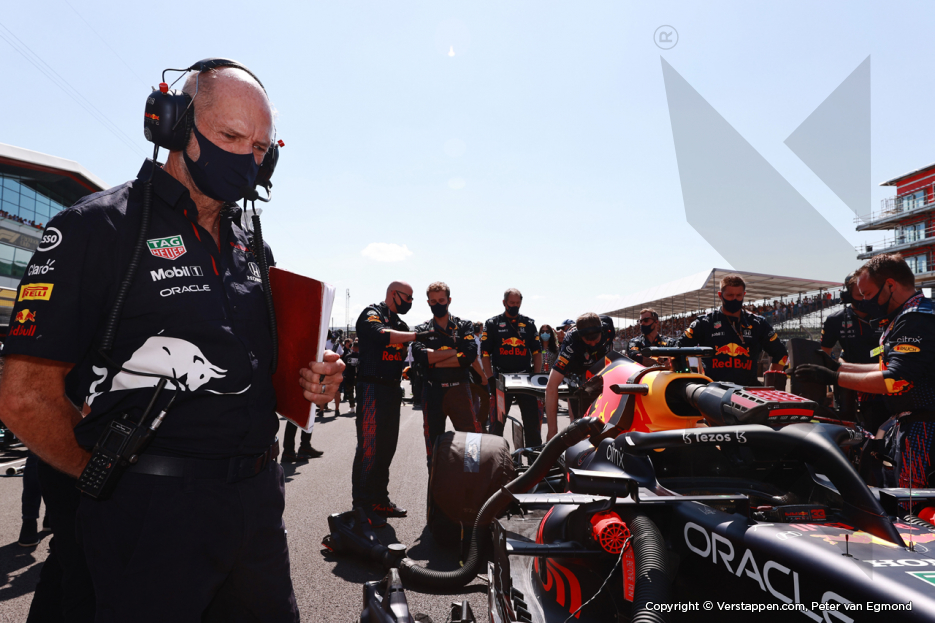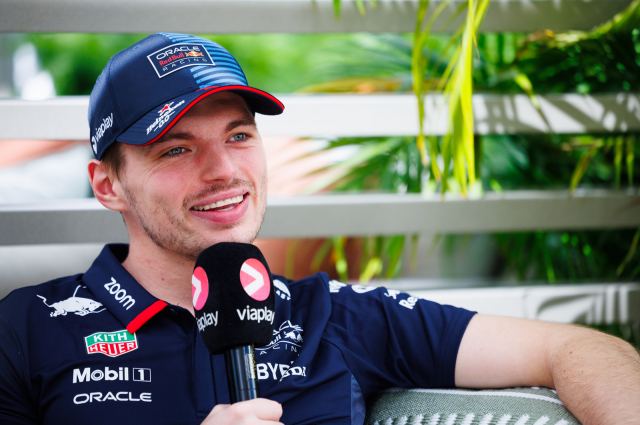Interview Newey: 'Max has the steely grit that any world champion needs'
Published on 07 August 2021 by Kees-Jan Koster
In the first half of the season Red Bull Racing has been fighting for both championships again, for the first time since 2013. Max Verstappen won already five races this year and teammate Sergio Perez finished first in Baku. One of the main people behind this success is Adrian Newey. The legendary designer has been drawing championship winning cars for Williams and McLaren, and Red Bull Racing won the championship four times with a by Newey designed car. In the Talking Bull podcast of Red Bull Racing, Newey is interviewed about the successes of this year, the challenges for next year and his collaboration with Max Verstappen.
How does it feel to be back at the top?
“A lot of pressure at the moment”, Newey begins. “Obviously the last couple of races have been very painful for us. Having had that sweet spot through the triple header, then to be taken out in two races and finish with almost zero points out of those has been painful. It highlights how quickly things can change in Formula 1. After the second race in Austria everything was looking very good with a decent points lead, and two races later we are slightly behind in both championships. I think that is the nature of the tightness of the competition we are in and we have to keep our heads down and keep pushing.”
Does being in previous title challenges help?
“The great thing about Red Bull is that we have generally had very good stability amongst our workforce. In 2009 it was the first time when we were able to mount a championship challenge. That particularly time we lost out, but I think that experience, and then going on to two very tight championship battles in 2010 and 2012, that molded us and helped to give us a resilience to keep going.”
Did you have a feeling at that start of the season in Bahrain that the RB16B was going to be a championship contender car?
“It tends to be very much unknown until you get out on track. We had a midsized regulation change over the winter in terms of some aerodynamic restrictions around the floor and the back of the car. There was some homologation of previous year's car into this season as a result of the COVID problems of last year, which meant we were very limited in what we could do to the car. We decided to spend our tokens on the gearbox casing. And that allowed us to also change the rear suspension, which was one thing that did not work well on the RB16 of last year. That was a decent step forward. We read the regulation changes on the aerodynamics reasonably well as well. So when we got testing in Bahrain Max was very complimentary of the car and felt it was a good step forwards from last year. Coming out of the Bahrain test we felt we had a competitive package, but you never know where exactly that is going to be. You do not know what engine modes or fuel loads others were running. We did not win the Bahrain race, but we showed we were competitive, and it has been nip and tuck with Mercedes since then.”
Are the areas that you used the tokens for, the things that have made the car stronger than last year?
“I think last year at the start of the year there were some things on the car that we in truth did not fully understand. Even though we have our wind tunnel program and our simulations, there are still things we do not fully understand, and that is exactly what happened. It took us a bit of time to get on top of those. But as is so often the case when those things happen, you actually learn things that perhaps you would not have done otherwise. Sometimes you can learn more from mistakes than you can from the good things. That gave us a good start for what we did over the winter and where we are now.”
How much does a busy second half of the season allow you to make upgrades to the car?
“The busy second half of the season is obviously a huge load on the race team itself in terms of the travel and time away from home. It is also a strain on the factory in terms of consumption of parts, especially after the last two races because the accident damages. But in terms of the development of the car, the number of races does not particularly change it.”
“The big balancing act we have got now is the huge regulation change for next season. It is the biggest single regulation change we have had since the ground effect cars were banned at the end of 1982. It is an enormous change in every sense of the word. The only thing that stays the same is the power unit, everything else is different. At the moment we keep developing this year’s car because we have a shot at the championship, and at the same time we cannot ignore next year. So we are doing our best to juggle those two balls, whilst also coping with the budget cap, which unfortunately meant we have had to shrink the size of the team in certain areas.”
How much influence have the drivers on a car?
“They have a big influence. The fact is that all the data we measure on the car, the hundreds of sensors we have are telling what the car is doing. But it is the driver that is much better at telling you why the car is doing it. It then is a matter of trying to marry the drivers comments to the sensors. That is one of the fascinating bits of the sport, trying to factor in the human input into what is otherwise a the data driven exercise. So their comments are very important.”
How does Max Verstappen compare with other drivers you worked with in the past?
“He has that same steely grit that any world champion needs and his driving ability is superb. His ability to drive a ‘neutral’ car, where the rear end moves around a bit, is exceptional. He matured into a great racer, he did not make any mistakes this year. If you count Hungary, then he had three DNFs without fault of his own. He kept his head, and bounced back from all of those. His natural speed is very clear, and he is in his feedback also very good. I have seen it all in terms of driver feedback, which is a huge variable. Some drivers who kind of talk endlessly and start with the first stage of entry into turn one, finishing the last stage of exit at turn 20, I have fallen asleep by then, having lost concentration. Max has got a very good balance of concentrating on the key parts that he needs to make the car go faster.”
“He is very easy to chat to. He has a range of interests, which I think is very important for a Formula 1 driver. If your only interest is Formula One, then that can almost make it too important to you, when the pressure comes up. So I think Max has got a very good balance in that sense”, finishes Newey.





